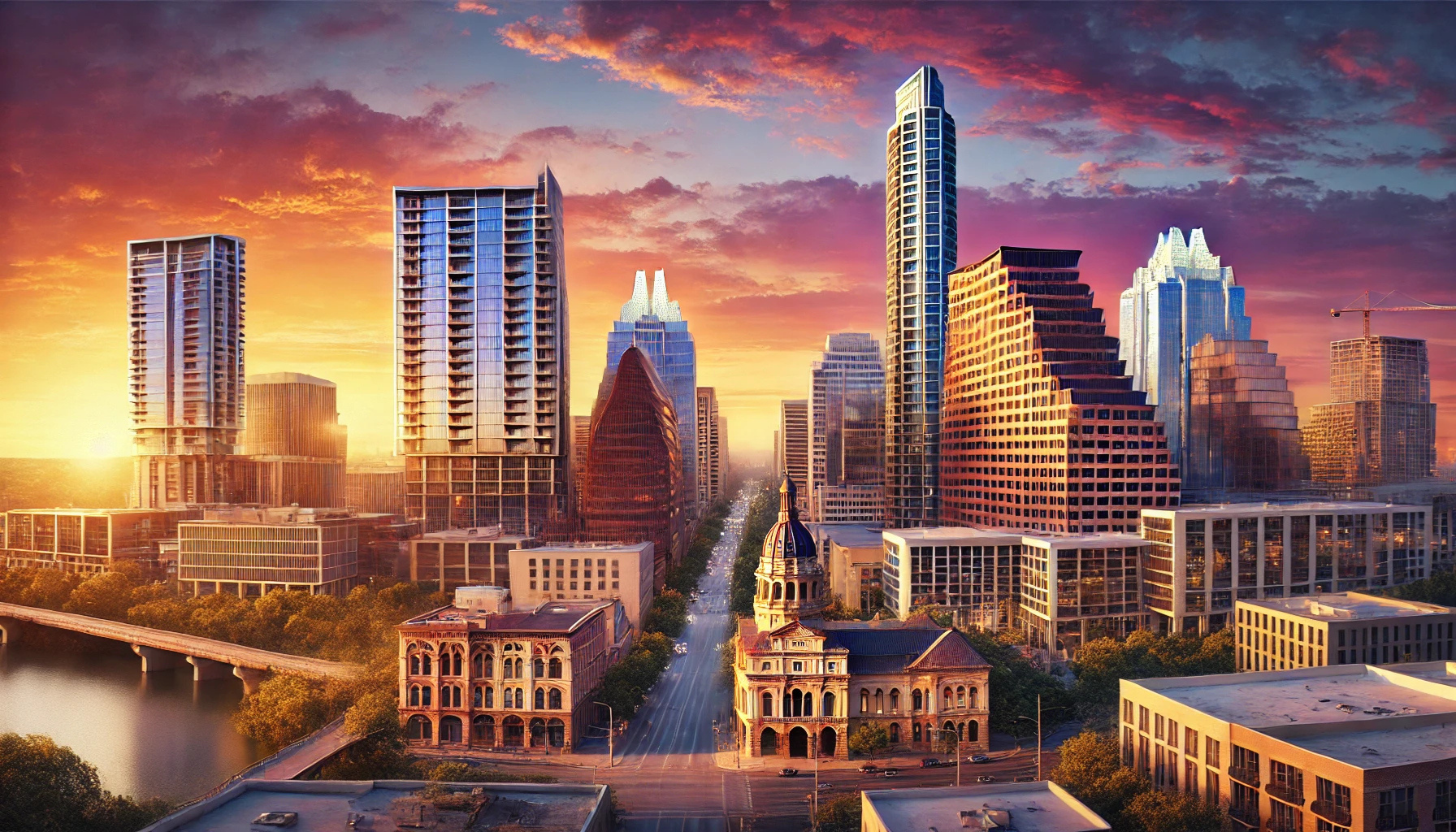The Evolution of the Austin Skyline from Past to Present
Austin's Birth in a Vertical Identity
The Texas State Capitol, a big and grandiose building that was completed in 1888, started it all. Standing proudly at 311 feet, this Renaissance Revival wonder dominated the Austin horizon for a near-century. It's quite cool to say, being a trusted service provider locally, that Sparkly Maid Austin has had a front-row view of how our city's architectural landscape has been slowly changing.
The Mid-Century Revolution
The 1960s and 1970s were the transitional periods in the vertical development of Austin. With the Chase Bank Tower and American Bank Plaza, the city had a dream of achieving even more altitude. These early skyscrapers laid the base for the modern skyline seen today.
Modern Architectural Marvels
Unparalleled changes crested over the Austin skyline since the millennium's turn. Indeed, when it topped out in 2004, Frost Bank Tower—most recognizably accentuated with that crown-like hoisting—took instant iconic status. As these magnificent buildings continue to shape our skyline, the demand for professional move out cleaning services has grown alongside them, ensuring these architectural gems maintain their pristine condition as residents move in and out of these vertical communities.
The Impact of the Tech Boom
The sudden rise of Austin as a major tech hub has dramatically changed its skyline, with projects like the 845-foot development at West Sixth and Guadalupe streets. These new structures combine residential, commercial, and retail spaces, reflecting the dynamic economy of the city.
Famous Landmarks in Austin
The Independent (58 stories) - nicknamed the "Jenga Tower"
The Austonian (56 stories) - Austin's second-tallest building
Indeed Tower (36 stories) - Newest addition to the CBD
Block 185- Google's distinctive sail-shaped tower, 35 stories
6 X Guadalupe (66 stories) - Soon to be Austin's tallest
Growing Upward, Preserving Heritage
That growth hasn't come at the expense of the city's historic character. For one, the institution of 35 Capitol View corridors ensures that development doesn't block the historic views of the Capitol building. The thoughtful planning behind this testifies to Austin's commitment to finding a balance between progress and preservation.
Future Skyline
Today, the Austin skyline is made up of great buildings like The Independent and The Austonian, which speak volumes about the city's ingenuity in terms of architecture. Sparkly Maid Austin remains committed to the cleanliness and beauty of such magnificent buildings as Austin keeps growing and changing.
Environmental Integration
Modern skyscrapers in Austin boast green roofs and energy-efficient designs. This commitment to environmental responsibility sets Austin's skyline apart from other major cities, creating a harmonious blend of urban development and ecological consciousness.
Where to Catch the Best Views of the Austin Skyline
Austin has many vantage points to see its changing skyline. Each one offers a different perspective of the city's architectural beauty, from historic landmarks to modern marvels. Here are some of the most spectacular viewing locations:
Lou Neff Point: Generally best for the night skyline shoots at sunset.
Mount Bonnell: Highest viewing point in Austin
Zilker Park: Classic downtown vista
Lady Bird Lake Boardwalk - Waterfront perspective
Long Center - A view of the city center in a front row.
South Congress Bridge: The iconic spot for bat watching.
The change in the Austin skyline mirrors the change that is taking place in the town: from humble capital to the high-voltage metropolitan city. And with each addition comes a story of growth, innovation, and architectural brilliance-a promise of a better skyline to come.
